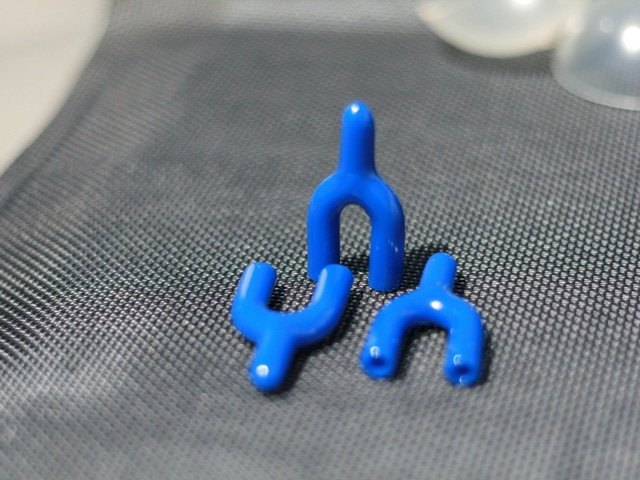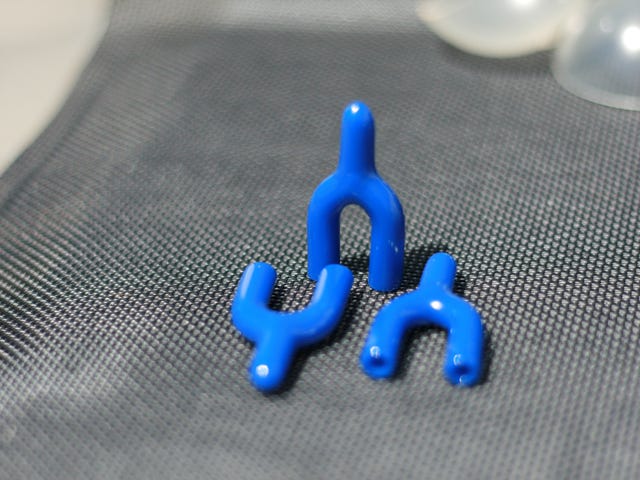Dip molding and coating: A versatile, flexible plastics process you may never have heard of
Dip molding and coating is a plastics process that, while used commonly on many types of products that include everything from medical devices to hand tools to gasoline pump handles, remains largely unknown to many plastics engineers and product designers. Yet, dip molding and coating using a variety of liquid polymers offers many advantages and, in certain applications, can even be an excellent alternative to the injection molding and extrusion processes.
April 30, 2015

 There are a number of advantages to dip molding and coating that makes these processes both cost-effective and time-efficient. The molds, called "mandrels," are typically needed for the dip molding process or for custom applications, and are made from either aluminum or steel. These mandrels can be made in a matter of hours, making them extremely cost-effective compared to the tooling required for other plastic processes. That means that samples can be provided in days, and production started in just a few weeks.
There are a number of advantages to dip molding and coating that makes these processes both cost-effective and time-efficient. The molds, called "mandrels," are typically needed for the dip molding process or for custom applications, and are made from either aluminum or steel. These mandrels can be made in a matter of hours, making them extremely cost-effective compared to the tooling required for other plastic processes. That means that samples can be provided in days, and production started in just a few weeks.
Depending on the number of mandrels needed for the project (based on the volumes required), capital costs are typically under $2500. In the dip molding process, the mandrels are heated and then "dipped" into the liquid polymer, natural and synthetic rubber, and even latex for certain applications. The material attaches to the mandrel, with the thickness of the product determined by the "dwell time" or the length of time the mandrel remains in the liquid polymer. The mandrels are then placed in an oven using heat to cross-link or "cure" the liquid polymer into a solid state. This "cure time" can vary by part.
In the dip coating process a specific product (such as pliers handles) are heated and dipped into the liquid polymer, which adheres to the metal. In both dip molding and coating, the parts are then re-heated after dipping to cure the material on the mandrel or the part. The parts are cooled, and the material is stripped from the mandrel or, as in the case of hand tools or other products requiring a soft-touch application, left in place on the product. The more mandrels or parts used at one time, the lower the cost.
Additionally, dip molding or coating creates perceived added value to the product. Liquid polymers come in a wide variety of colors, and can be printed with corporate logos and other decorations to meet your marketing promotional requirements.
Another benefit is that whether you have a low-volume requirement or a high-volume production project, dip molding and dip coating can offer both time and cost savings. It can also be an alternative to the injection molding process in applications where part geometry is not too complex and material with a high rigidity level is not an absolute necessity.
One company specializing in dip molding and coating is Molded Devices Incorporated (MDI), which works closely with a variety of OEMs across many industries such as medical, aerospace and defense, automotive, construction, and industrial. Dip molding and dip coating applications include the production of various sized medical balloons, endoscope components, and cannulas with highly customized material formulations and precise dimensional tolerances; protection for high-end glass and metal components against chipping, scratching, corrosion, static in PCB components, and many more highly customized applications.
For example, a customer came to MDI with a grommet requirement spec'd in a thermoplastic elastomer (Santoprene) that would be produced by the injection molding process. However, the program for this component didn't have the volumes needed to justify the injection mold required to do the job (the estimated annual units on this particular part was <10,000 pieces). MDI was able to manufacture this component utilizing a proprietary process developed for other similar applications. And the tooling was designed and built for under $500. MDI says that it was also able to keep the per piece price within the customer's budgeted range, making the grommets cost effective at the lower volumes.
Another project for which dip molding provided an ideal solution involved a customer that manufactures high-value titanium products requiring many different machining operations. After discovering a high rate of returns due to minor scratching or small "dings" in the product due to the handling of the products, they came to MDI looking for a solution. "Together we developed a protective dip-molded cover used in the plant to protect the product as it moved between stations during the various operations, greatly reducing returns and rework costs," said Dave Schoell, Vice President of Sales for MDI.
Dip molding can also be used to compete in blow-molded applications for bellowed products. "One customer initially reached out to a blow molding company for a bellowed gear shift cover," explained Schoell. "The blow molding company came back with tooling and cutting fixture costs in excess of $70,000. MDI made the mandrels for under $500 and a lower part cost as well."
As seen by these examples, dip molding and dip coating can be used in a wide range of applications from protective coverings, medical applications, recreational equipment, sound dampening, circuit board protection, in fitness equipment, bumpers, soft grips on power tools where haptics (touch) are important, lawn and garden, and steering wheels, among others.
[Image: MDI]
About the Author(s)
You May Also Like




